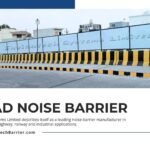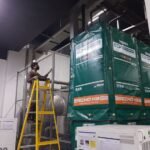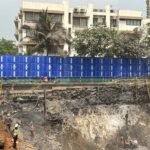![]()
Installation and Maintenance Tips for Polycarbonate Noise Barriers
Polycarbonate Noise Barriers are a remarkable solution to combat noise pollution effectively, providing much-needed respite from the clamor of urban life. However, to ensure they continue performing optimally and maintain their aesthetic appeal, proper installation, and regular maintenance are essential. In this article, we’ll delve into valuable installation and maintenance tips for Polycarbonate Noise Barriers.
Installation Tips:
- Site Assessment: Before installation, conduct a thorough site assessment to identify the optimal locations for noise barriers. Consider factors such as noise sources, prevailing wind directions, and the proximity of sensitive areas. This assessment will help determine the ideal placement and height of the barriers.
- Secure Foundations: Ensure that the foundations for your polycarbonate noise barriers are secure and stable. Properly anchored posts or supports are critical for the long-term stability of the barriers, especially in areas prone to high winds or extreme weather conditions.
- Follow Manufacturer Guidelines: Always adhere to the manufacturer’s installation guidelines and recommendations. These guidelines are specific to the product and will help you achieve the best results. Deviating from them may compromise the barrier’s effectiveness.
- Proper Alignment: Ensure that the polycarbonate panels are aligned correctly during installation. Misaligned panels can create gaps that allow sound to pass through, diminishing the barrier’s noise-reduction capabilities.
- Sealing and Weatherproofing: Properly seal joints and connections between panels to prevent water infiltration. Water ingress can lead to damage and reduce the lifespan of the barrier. Additionally, consider using weatherproof coatings or treatments to protect the polycarbonate from UV radiation and environmental wear.
Maintenance Tips:
- Regular Inspections: Schedule routine inspections of your polycarbonate noise barriers. Look for signs of damage, wear, or loose components. Early detection of issues allows for timely repairs, preventing more extensive damage.
- Cleaning: Keep the barriers clean to maintain their aesthetic appeal and functionality. Regularly remove dust, dirt, and debris from the panels using a gentle cleaning solution and a soft cloth. Avoid abrasive materials that could scratch the polycarbonate surface.
- Repairs and Replacements: Address any damage promptly. Cracked or damaged panels should be replaced as soon as possible to maintain the barrier’s effectiveness. Consult with a professional for proper repairs or replacements.
- Anti-Graffiti Measures: In urban settings, consider applying anti-graffiti coatings to deter vandalism. These coatings make it easier to remove graffiti without damaging the polycarbonate surface.
- Annual Assessment: Conduct an annual assessment of the barrier’s structural integrity and performance. This comprehensive evaluation should include a check of the barrier’s alignment, anchor points, and overall condition.
- Documentation: Maintain a record of all maintenance and inspection activities. Having a documented history of maintenance can be valuable for warranty claims and long-term planning.
- By following these installation and maintenance tips, you can maximize the effectiveness and longevity of your polycarbonate noise barriers. Not only will they continue to provide excellent noise reduction, but they’ll also enhance the overall quality of the environment in which they are installed.
- For expert guidance on polycarbonate noise barrier installation and maintenance, contact Envirotech Systems Limited today. We’re here to help you create quieter, more peaceful surroundings.




